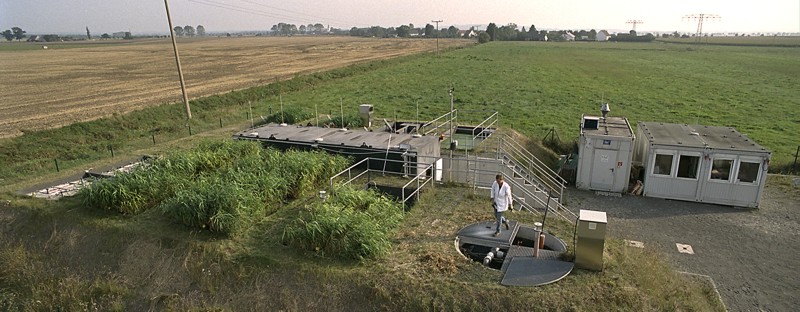
Ecotechnology Research Facility Langenreichenbach (Germany)
Subsurface-flow treatment wetlands (constructed wetlands) are commonly used to treat domestic wastewater to secondary standards. This ecotechnology is advantageous in areas for which centralized sewage treatment is not a cost-effective option. Compared to conventional wastewater technologies, treatment wetlands can be low-cost, simple to operate, and constructed out of local materials. These reasons led to the use and implementation of this ecotechnology throughout the world.
Within the scope of the 2005 completed project ‘Pathogen Reduction by Constructed Wetlands’ ecotechnologies at pilot and technical scale were optimised in regard of reduction of faecal indicator organisms and pathogenic / facultative pathogenic microorganisms.
Recently there is growing interest in achieving a fully nitrified effluent from a secondary treatment system. Tertiary HSSF treatment wetlands can produce fully nitrified effluent, but when used as a secondary treatment technology, HSSF wetlands cannot fully nitrify due their to limited oxygen availability.
The limited oxygen-transfer capability of conventional subsurface flow wetland designs has led to the development of design configurations that improve substratum oxygen availability. These enhanced designs are capable of providing sufficient oxygen for BOD removal and nitrification through means of introducing oxygen via shallow bed depth; intermittent dosing regime, frequent water level fluctuation (tidal flow or reciprocating wetlands), or direct mechanical aeration of the granular substratum. The aim of the current activities is to comprehensively examine the effectiveness of various state-of-the-art eco-technology design adaptations and operational strategies in terms of treatment efficiency, longevity, reliability and affordability. Within each pair of wetland cells, one will be planted with Phragmites australis and the other will remain unplanted.
The facility includes eight pairs of subsurface-flow treatment wetland cells, with each pair representing a different design approach aimed at optimizing either hydraulic efficiency or oxygen availability.
The wetland systems to be compared are briefly described:

- Vertical Subsurface Flow (VSSF) with unsaturated sand substrate and intermittently pulse loaded
- VSSF with unsaturated sand substrate operated with regular resting
- VSSF with saturated and with active aeration installed
- VSSF with saturated substrate and active aeration installed at the bottom of the cell
- Horizontal Subsurface Flow (HSSF) (conventional passive design as a reference; water depth = 0.5 m)
- HSSF with shallow (0.25 m) water depth
- HSSF with active aeration installed at the bottom of the cell
- Reciprocating, where water is cycled between two beds in an alternating fill and draw batch process
